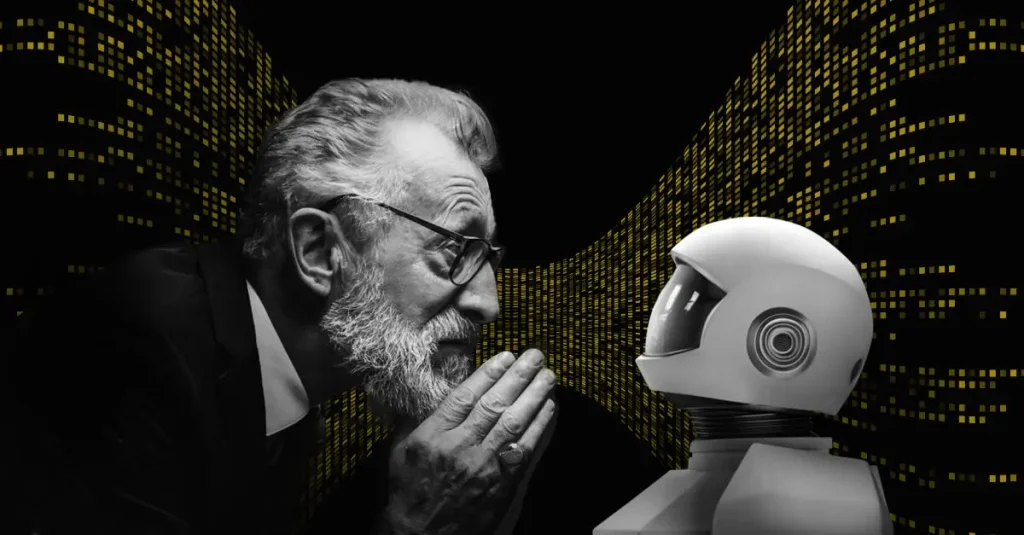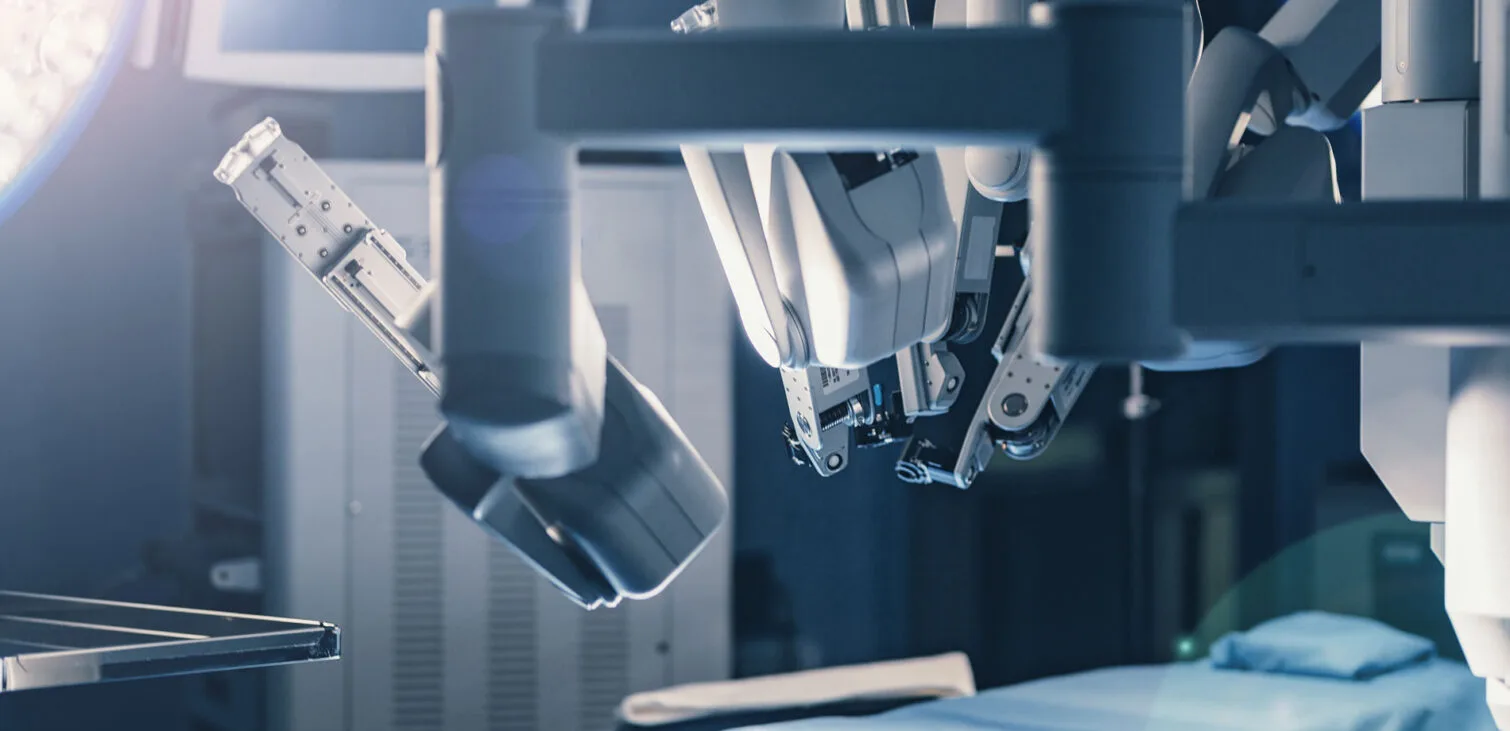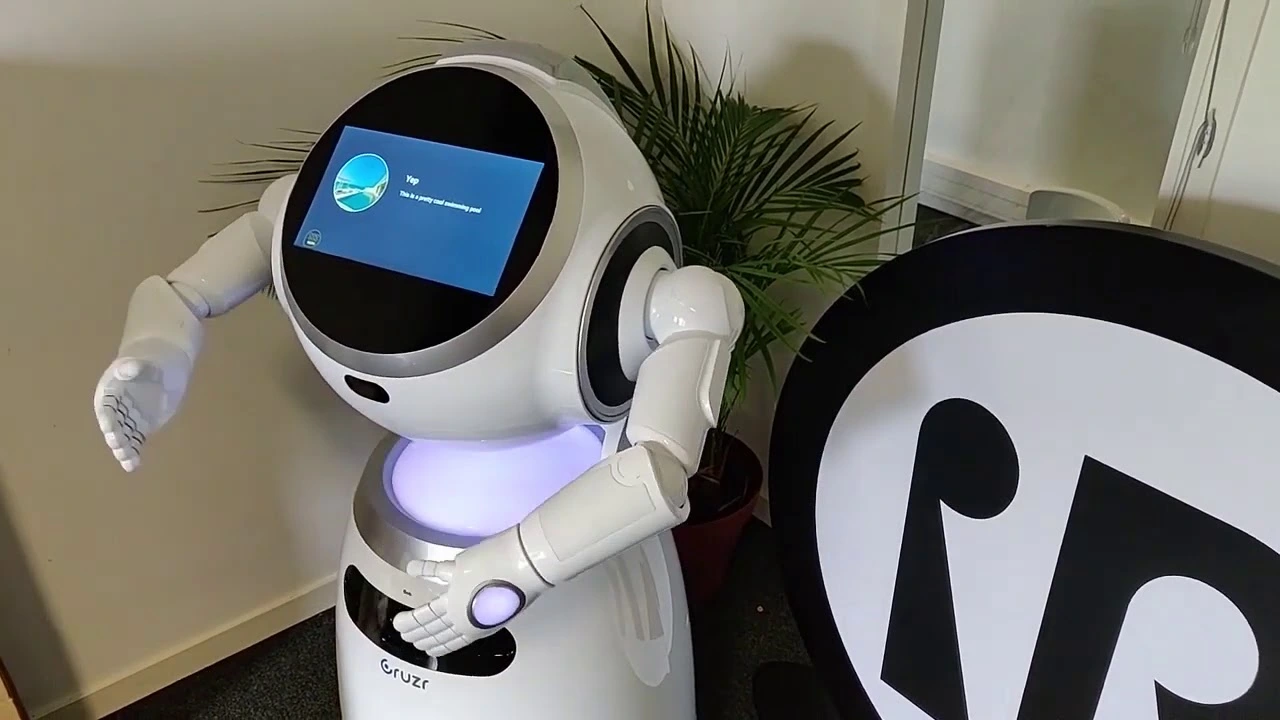
The use of robotics in healthcare is steadily rising. New applications of robotics in healthcare, ranging from exoskeletons and prosthetics to surgical and nano-robotics have already flooded the market. Healthcare robotics is expected to become a US$ 32.5 billion industry by 2027 with a CAGR of around 21.3% from 2020 to 2027.
The COVID-19 pandemic further highlighted the need for robots as integral members of our healthcare workforce. Robots were used for maintaining hospital sanitization through disinfection robots or for fetching medicines.
They were also used as telepresence robots to keep patients company during isolation.
The application domain of healthcare robotics is only going to expand as sensors and actuators become smaller and more precise, and artificial intelligence is used to expand the robot’s learning and interaction capabilities. The rise of robots helping the elderly is growing in numbers. Moreover, robots for senior care are a rapidly growing concept in most countries nowadays.
Despite the vast applications of robotics in healthcare a primary demographic that robots can benefit is aging adults.
Recent developments in the field of robotics can enable robots to perform various lab tests, deal with issues of arteries, take biopsies, and even kill cancerous tumors. All of this is possible without human intervention.
The Case for Introducing Robots in Healthcare
Countries like Japan, the USA, Italy, and Denmark are facing a change in their population demographics as the figures skew in favor of the aging population.
In the USA alone, the number of people over the age of 65 will make up 21% of the population by 2030 as opposed to just 15% in 2018. Robots for elderly care are a growing concept in Western countries.
This shift in demographics places a substantial burden on healthcare facilities and care providers which may include medical workers as well as family members.

Most people prefer to age in place instead of leaving their lives behind to age in a care facility. However, aging imposes a significant challenge on a person’s ability to live independently owing to declining health which can affect mobility, and memory and may lead to social isolation.
Additionally, for a majority of aging in place, the primary caregiver is also an aging partner or an adult child. Therefore, taking care of another dependent may impose mental and physical side effects on the caregiver as well.
Caring for the elderly in nursing or community homes also poses a challenge due to a shortage of healthcare workers concerning demand. Research suggests that the addition of each patient to a nurse leads to a 23% increase in nurse burnout.
Furthermore, the cost of accessing these care benefits can add significant financial stress to patients or their families. Therefore, digital twin healthcare robotics can play a significant role in supporting the quality of life for aging adults, allowing them to age with dignity and reducing the stress on care providers. People nowadays prefer assistive robots and robotics in healthcare for elderly people.
There is an abundance of literature available outlining the different services that robotics in healthcare may provide when caring for an elderly person. You can find some of these roles below.
Robotic Involvement in Activities of Daily Living to Improve Quality of Life
Activities of daily living (ADL) include tasks such as mobility, eating, drinking, dressing, hygiene, and sleep. These tasks are necessary to meet the basic physiological needs of a person. Additionally, robots in healthcare can support instrumental activities of daily living that are not essential to the person’s survival but significantly add to the quality of life. These activities include tasks such as cooking and house cleaning.
CRUZR and Pepper
Robots in healthcare such as Cruzr and Pepper have been deployed at hospitals, and private and nursing homes to monitor individuals, especially during the COVID-19 pandemic. The robots were equipped with sensors to monitor vitals such as blood pressure, oxygen saturation, and body temperature and therefore can perform temporal monitoring of the individual’s health.
This allows robots in healthcare to provide the elderly with the requisite health monitoring while keeping the caregivers aware of any emergency that may arise.
Additionally, robots in healthcare can set reminders for medicines, meals, and doctor appointments, sometimes even allowing the elderly to virtually attend these appointments through telemedicine robots, reducing the need for a caregiver to be physically present to provide care.
This can be critical during pandemics such as COVID-19 where reducing human-to-human contact can be pivotal in ensuring the health and safety of the elderly without compromising care. Post-COVID-19 these robots can continue to perform interventions, as deemed necessary, significantly reducing the burden on the care provider.
Other Robots
Furthermore, developers have designed some elderly healthcare robots to provide physical support to the elderly.
- My Spoon has been designed to help individuals with motor control disabilities to eat or get dressed, with minimal dependence on their caregiver.
- RIBA (Robot for Interactive Body Assistance) is capable of moving patients in and out of bed and wheelchair significantly reducing physical harm to the care provider when performing such strenuous tasks.
Similarly, there are countless examples of robots in healthcare that can assist the elderly in activities of daily living and instrumental daily living such as
- HERB- a robot butler that can cook, clean, and perform other household functions,
- Care-O-bot 3, which can facilitate the elderly by fetching objects for them and can alert the police in case of emergency, and
- Cody which is designed to give baths to the elderly. 2
The robots in healthcare can facilitate the elderly with everyday tasks ranging from health monitoring and recovery to physical tasks. And they are just scratching the surface of the potential that robots hold with mediating a decline in elderly health.
Breakthroughs and Potential in Managing Social Isolation, Depression, and Mental Health
Social Healthcare Robots
Developers have designed social healthcare robotics to facilitate interaction between human robots and human humans. And they can be significantly helpful in providing emotional and psychological support to the elderly. Unlike healthcare robots designed to facilitate activities of daily living, where the appearance of the healthcare robot is primarily motivated by robot function, robots designed to provide emotional support can vary in form factor ranging from animal-inspired (PARO, AIBO) to humanoid robots such as Pepper.
PARO
Depending on their form factor the support that these robots can provide also varies significantly. For example, studies done with the PARO robot which is designed as a therapy robot discuss the positive effect on the mood of the elderly, alleviation of loneliness as well, and increased interaction among the study participants. These care robots or healthcare robots are interactive too.
Pepper and CRUZR
Humanoid robots such as Pepper can guide exercise programs for the elderly in care homes. And they have resulted in longer compliance by the elderly in continuing their routines. Robots such as Pepper and CRUZR are also capable of reducing social isolation for the elderly by keeping them connected with their relatives through video calls. However, in providing healthcare and emotional support for the elderly, they act as a mediator between human-human interaction. These elder care robots are a game-changer.

Potential in Dementia and Alzheimer
People with dementia and Alzheimer’s are affected by memory loss and may need to be reminded of the same thing multiple times. This persistent repetition can be exhausting for the care provider who may have other responsibilities. The caretaker might therefore respond with short replies that express their frustration. Robotics in the healthcare industry are designed to target this sort of need.
This can have a significant toll on the elderly’s well-being who might not even remember the question.
In these situations, robotics in healthcare industry can become exemplary mediators as their sole goal can be to facilitate the elderly. Robots bring the additional advantages of being patient and unjudgmental about the elderly’s condition or requests for repetition.
As a result of these benefits, researchers and cognitive scientists are conducting investigations facilitating the elderly through robots. However, robotics in healthcare industry facilitate the very purpose of assisting people battling such conditions.
They imagine the robots benefitting the elderly by preventing social isolation, providing therapeutic support, and other necessary interventions.
The Challenges of Robot Adoption and Deployment
Robotics in healthcare hold the enormous potential to provide support to the elderly. However, a fully autonomous healthcare robot capable of replacing a nurse or a human caregiver is still some time away. Developers face three separate categories of challenges in robot adoption and deployment.
Technological Challenges
Improvements in artificial intelligence, sensors, actuators, embedded computing as well and control strategies have significantly advanced the capabilities of healthcare robots. Robots are now capable of learning new techniques through transfer learning and inverse-reinforcement learning to suit user needs.
However, robots still have a limited ability to sense nuances in human behaviors. And users need to do significant research to mitigate this gap.
There are still limitations on the power required by a robot to perform all the care work for an aging individual. Furthermore, developers need to address issues of robot safety, reliability, and long-term learning.
Users need to address them before they design fully autonomous healthcare robots to replace human caregivers.
Commercial Challenges
Robot commercialization is an additional challenge. Financial barriers to robot adoption for elderly care can be significant. A Paro robot can cost up to $6000, and a Pepper robot can incur a cost of around $23000.
Developers might also come across additional costs for maintenance and training for the system. Healthcare robots tend to incur a heavy price on the budget.
Such steep costs can render robots inaccessible for many or diminish their cost-effectiveness when considered against their value.
Furthermore, there is a need to run mass trials with end users to verify robot safety and operation before successful commercialization and adoption of these healthcare robotics become possible.
Ethical Concerns
The biggest concerns that arise from using robotics for elderly care are ethical concerns regarding deception, social substitution, and user privacy and dignity. Robots for elderly that can express emotions that suggest concern for the elderly can mislead them.
It might lead the elderly into thinking that the robot genuinely cares about them. Similarly, robots for elderly capable of providing emotional support may have negative consequences. Instead of facilitating human social interaction, they might end up substituting for it. Robots for elderly provide the much-needed assistance and attention.
Furthermore, robots for elderly equipped with sensors such as cameras and microphones can also lead to a violation of the individual’s privacy. This is because the elderly might be unaware that the robot is collecting their data in a situation.
Future of Robotics in Healthcare
As of now, the future of robotics in healthcare seems bright and quite promising. There are many breakthroughs and advancements in the field of robotics in healthcare. We can expect to see monumental improvements and advancements due to robotics in:
- Minimally invasive procedures
- Personalized rehabilitation devices
- Use of robots for telemedicine
- Robotic patient monitoring
Conclusion
Despite these challenges, the value that healthcare robotics can add to the system and care of the elderly is undeniable. The COVID-19 pandemic has highlighted several roles in which robots can facilitate the elderly to live a more independent life.
It can also enable them to age with dignity through both physical and non-physical support. The benefits of robot intervention also include the alleviation of the stress of care provision on care providers and healthcare workers.
To overcome challenges to robot adoption, policies should accelerate robot commercialization and facilitate mass long-term testing. This will enable users to generate the requisite data for verifying robot usability.
Additionally, end-robot users and other stakeholders should engage themselves in the design of the robot. It can lead to valuable dialogue when privacy outweighs concerns over safety, security, and vice-versa.
Such a process of co-designing with the end user can also help tackle challenges with robot deception and social isolation. This is because the end user develops a detailed description of robot behavior.
FAQs
